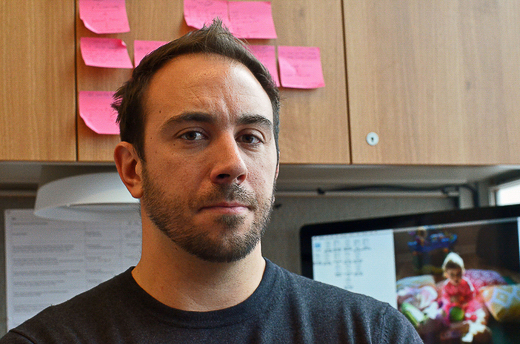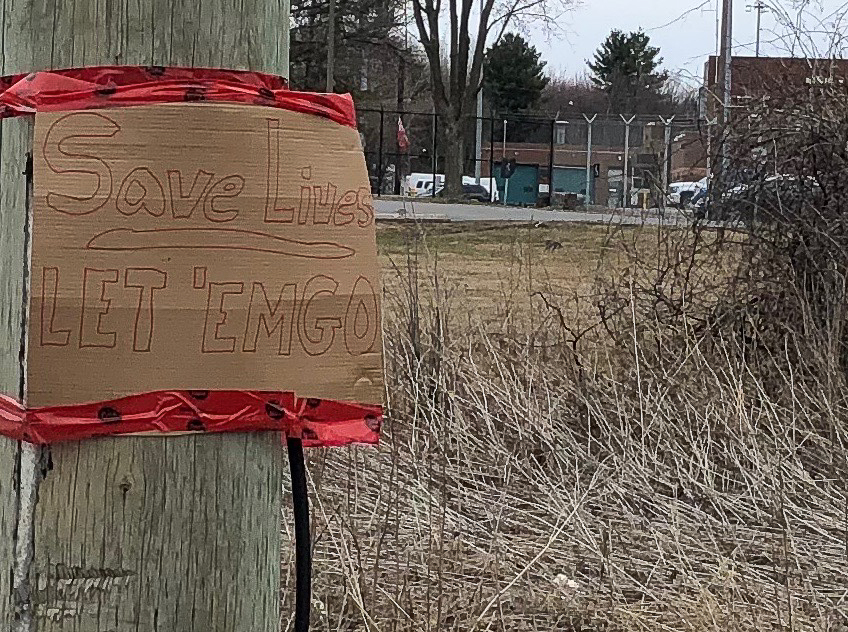With more than 8,500 COVID-19 cases linked to Canadian carceral institutions, some issues related to the well-being and socialization of inmates are becoming increasingly clear. Though there has been advocacy for the freedom and safety of inmates before the pandemic, it has pushed teams of researchers to focus on prison reform.
One research project is the Criminalization and Punishment Education Project, composed of students and professors at Carleton University and the University of Ottawa. The project was designed in 2014 to educate the public on crime, punishment and social justice.
“On a good day, prisons are dehumanizing spaces,” said Justin Piché, a founder of the project and criminology professor at the University of Ottawa. Piché said prisons have undermined public health and community safety even before changes made due to COVID-19.

What’s happening behind the walls
Certain prison programs such as visitation and outdoor time have been reduced in Canadian carceral institutions as a result of COVID-19. According to the Government of Canada, institutions could be closed to visitors at any time.
“Anything that could have been experienced positively by incarcerated people is being removed by this pandemic,” Piché said.
Kyle Lawlor, a communications advisor for the Correctional Service of Canada, said depending on the severity of a COVID-19 outbreak at an institution, there may be no programs at all.
To compensate, prisons across Canada are finding alternatives for programs, Lawlor said. Any in-person activity requires inmates to wear masks, including spending time outdoors. Staff must also sanitize any surfaces that have been touched.
“We’re trying to isolate as much as we possibly can so that the virus can’t spread while simultaneously ensuring that we can provide the programs and opportunities that inmates need,” Lawlor said.
Hollis Moore is a law professor at Carleton University and an investigator for the Prison Transparency Project, a group of researchers who are studying prison systems in and outside Canada. She said in-person programs are vital for inmates.
“If anything, COVID-19 has taught us all that these mediated interactions aren’t comparable to an in-person contact with loved ones,” Moore said.
In-person programming is also essential for rehabilitation since inmates need to maintain healthy relationships to re-enter society with ease, Moore said.
“Visitation is what enables people to continue to be a person, and not just a prisoner,” she said.
The controversy of ‘Bell Let’s Talk’
Inmates wanting to maintain relationships while visitations are reduced must rely primarily on written correspondence and phone calls. Maeve McMahon, a legal professor at Carleton University, said this has not been easy since there are barriers for inmates to access phones.
Using the Ottawa Carleton Detention Centre as an example, McMahon said many inmates are not only unable to afford making a phone call, but that cell phones do not accept calls from their centre.
According to Michael Spratt, a lawyer from Ottawa who obtained documents outlining the provincial government’s commission from provincial jail collect calls in 2017, the high cost of phone calls for inmates is not a surprise.
Bell Canada has a contract with provincial jails, Spratt said. Because of this, the company can control how expensive fees are for inmates, including charges for collect calls. These rates are extremely high when using a public payphone, with prices ranging from one to 30 dollars.
Spratt said Bell Canada’s ‘Bell Let’s Talk’ campaign implemented higher call pay rates for inmates, while the company profits. The Government of Ontario is also profiting from this campaign, according to Spratt.
“Inmates, because they’re incarcerated, because they have no other choice and no other option, are forced to pay the collect call rates that no one else, practically speaking, is subject to,” Spratt said.
Bell Canada said in an email to the Charlatan that the company is providing temporary telephone service in Ontario prisons until the government selects a new provider. The company also said provincial correctional facilities use other providers since Bell Canada does not have contracts with provinces across Canada.
Some services do not accept collect calls, so family members of inmates must sometimes find alternatives to contact each other or install and pay for a physical phone line, he said.
However, there have been some changes since the pandemic. Institutions have introduced calling cards and cell phones, which are intended to help mitigate the spread of COVID-19. Still, the time inmates have to make phone calls is very limited, and most are still using payphones to make calls, according to Spratt.
To mitigate the spread of COVID-19, Piché, Moore and McMahon all said releasing inmates, such as those on remand and awaiting trial, would help.
“Authorities need to enact diversion and decarceration measures,” Piché said. “[They need to] invest more in building community capacity for people reentering society.”
Community capacity includes income support, drug treatment and more funding for mental health resources, Piché explained.
“There is a higher threshold that needs to be met to justify depriving a person of freedom while they are legally innocent,” Moore said.

The third wave
During the early stages of the pandemic, inmates were being released more frequently. In Ontario, the prison population decreased by more than 2,000 inmates partly because of temporary absence permits.
These types of permits grant an inmate time away from prison or jail. For example, some inmates would only serve their time on weekends, McMahon said. They are also not uncommon, and are one measure to help mitigate the spread of COVID-19 within institutions, she said.
During the second wave of the pandemic, cases within federal correctional facilities across Canada increased to 880 from 361, according to a report issued by the Government of Canada.
“These demographics would suggest that, like other congregate living settings, prisons are much more susceptible to the widespread transmission of COVID-19,” the report noted.
But according to Piché, prison populations in provinces such as Ontario have started to increase. He said this is worrisome since COVID-19 spreads easily in congregate living.
“There’s no getting around it,” Piché said. “If a unit inside a prison has a few COVID-19 cases, that can spread like wildfire.”
According to Lawlor, public health researchers at Canada’s National Microbiology Laboratory and the Winnipeg Regional Health Authority have collected air and surface samples at the Stony Mountain Institution, a federal prison in Manitoba, to examine how COVID-19 spreads in these types of facilities.
Their findings suggest the most likely places to transmit COVID-19 are on surfaces for eating and drinking, as well as television remotes. According to Lawlor, they did not detect the virus in areas used by correctional officers or in areas that were routinely cleaned.
Prisons are educating staff on cleaning methods and ensuring everyone has access to personal protective equipment for the third wave, Lawlor said.
Vaccinating inmates
Inmates also need better access to vaccines, Piché said. According to the Correctional Service of Canada, as of May 24, there have been a total of 10,879 vaccines administered in federal correctional facilities across the country—most being the first dose.
Provincial inmates are not getting the same treatment, according to the J.A.I.L. Accountability and Information Line run by the Criminalization and Punishment Education Project.
The hotline tweeted incarcerated callers at the Ottawa Carleton Detention Centre are extremely hesitant to be vaccinated against COVID-19, and only two out of every 22 inmates in one living unit have been vaccinated. The detention centre is under provincial jurisdiction, meaning their inmates are serving a sentence of two years or less.
We hear from our incarcerated callers at the Ottawa-Carleton Detention Centre (OCDC) that COVID-19 hesitancy rates are extremely high.
ONLY 2 OUT OF 22 PRISONERS in one living unit accepted to take the vaccine.
— J.A.I.L. Accountability and Information Line (@jail_line) May 11, 2021
The hesitancy is because the Ottawa centre is not providing inmates with sufficient information about the vaccine, J.A.I.L. alleged in a tweet.
Ottawa Carleton Detention Centre representatives said in a phone call they are not allowed to give out any information about their inmates relating to COVID-19.
Although COVID-19 has brought unique challenges to institutions, Spratt said concerns for inmates’ well-being is not new.
“Jails are often neglected,” he said. “There have been repeated comments and condonations from Ontario courts about the lack of funding, about the deplorable conditions and the inhumane treatment.”
Spratt said it’s important to remember that when inmates struggle, we all struggle.
“When we interfere with an individual’s ability to maintain connections in the community, obtain treatment and properly integrate themselves into society, it’s community safety that suffers,” he said.
Featured photo by Grant Durr via Unsplash.





